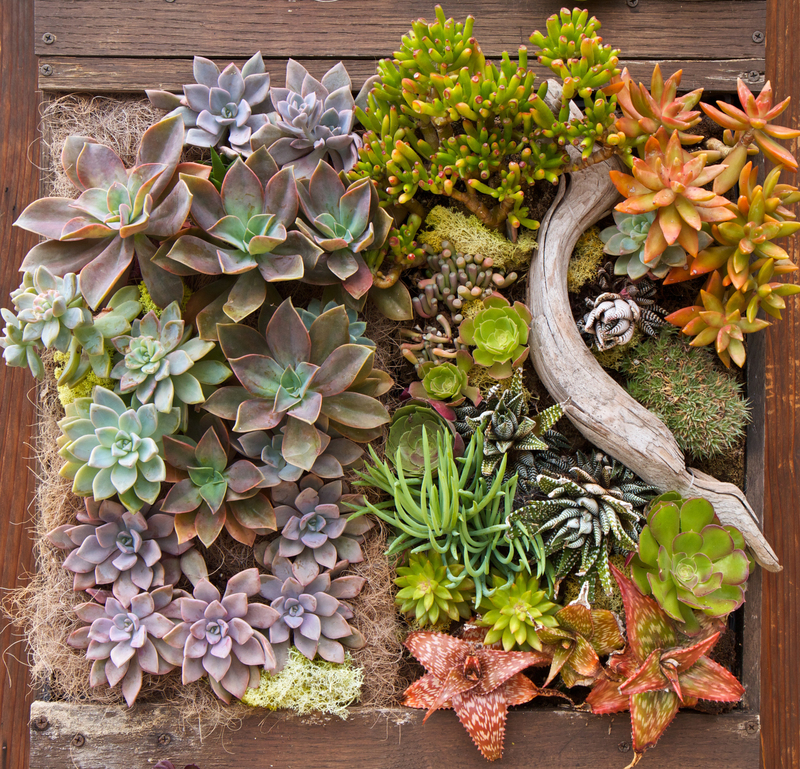Your Guide to a Fresh Start for a Neglected Garden
Posted on 30/06/2025
Your Guide to a Fresh Start for a Neglected Garden
Has your backyard or front garden been left unattended for one season too many? Overgrown weeds, tangled shrubs, and lifeless soil can make reclaiming a neglected garden feel like an overwhelming task. Fortunately, with the right strategy and a step-by-step approach, you can transform a chaotic plot into a verdant oasis.
In this comprehensive guide, we'll walk you through the best practices and techniques to revive a neglected garden, from assessing its current state to replanting and ongoing care. Whether your goal is a productive vegetable patch, a blooming flower bed, or a relaxing lawn, you'll find everything you need for a successful garden renewal here.
Why Give Your Overlooked Garden a Fresh Start?
Gardening isn't just about beautifying your outdoor space. A neglected garden holds vast potential--both for your wellbeing and the environment. Here's why it's worth the effort:
- Mental and Physical Health: Gardening reduces stress and keeps you active.
- Biodiversity: Each revitalized garden can support pollinators, local wildlife, and plant diversity.
- Food Security: Even a simple vegetable patch helps produce healthy, homegrown food.
- Value Boost: A well-maintained garden enhances your property's curb appeal and value.

Step One: Assessing the State of Your Neglected Garden
1. Survey the Area
Start by taking a detailed tour of your garden. Note any overgrown areas, dying trees, invasive weeds, or damaged structures. Ask yourself:
- Which plants are worth saving?
- Are there signs of pest or disease infestation?
- Is the soil compacted or eroded?
- Are paths, fences, or raised beds in need of repair?
2. Prioritize Safety and Accessibility
Remove broken garden tools, hazardous debris, or any sharp objects. If your neglected backyard is particularly wild, be cautious of hidden stumps or animal nests.
Step Two: Clearing Out and Making Space
1. Remove Weeds, Debris, and Dead Plants
Clearing your garden thoroughly is the foundational step. Use a spade, rake, and gloves to tackle:
- Overgrown grass and invasive weeds: Uproot them by the roots to prevent regrowth.
- Dead annuals and deteriorated perennials: Cut them down and add to the compost pile.
- Garden litter: Stones, plastics, fallen branches, and broken pots.
2. Prune Overgrown Shrubs and Trees
Restoration pruning helps rejuvenate mature plants. Remove damaged or diseased branches first, then thin out crowded growth. Don't be afraid to cut shrubs back hard--they often return healthier.
3. Reclaim Pathways and Boundaries
Clear out pathways, borders, and fencing lines. Repair or replace broken materials, and reroute edging as needed for a tidy look.
Step Three: Reviving Your Garden Soil
1. Test and Amend the Soil
Healthy soil is the engine behind every vibrant garden. Here's how to assess and restore yours:
- Soil Testing: Pick up a kit from your local nursery or order one online. Check for pH levels, nitrogen, phosphorus, and potassium.
- Add Compost and Organic Matter: Spread well-rotted manure or compost to improve soil structure and fertility.
- Aerate: Use a garden fork to loosen compacted soil, helping roots breathe and water penetrate.
- Correct Deficiencies: Apply lime to raise pH, or elemental sulfur to lower it, following test results.
2. Mulch for Moisture and Weed Control
Add a 2- to 3-inch layer of mulch (wood chips, straw, or bark) over your cleaned beds. Mulching offers multiple benefits:
- Retains soil moisture
- Suppresses new weeds
- Adds nutrients as it breaks down
Step Four: Crafting a Climate-Friendly Garden Plan
1. Decide on Garden Zones
Consider grouping plants by their needs for sun, water, and soil. Plan distinct zones such as:
- Vegetable Patch: Sunny spots with rich soil and easy watering access.
- Flower Borders: Areas earmarked for perennial color and pollinator attraction.
- Shade Beds: Useful under tree canopies for hostas, ferns, and shade-loving groundcover.
- Lawn or Seating Area: Create a restful spot to enjoy your work and nature.
2. Choose the Right Plants for a Garden Makeover
Select tough, low-maintenance plants as you start your garden revival--especially natives adapted to your climate. Some quick suggestions:
- For Easy Color: Try coneflowers, daylilies, black-eyed Susans, and hostas.
- For Edible Returns: Herbs like mint, thyme, and sage often bounce back even after neglect.
- For Robust Structure: Choose ornamental grasses or evergreen shrubs.
3. Incorporate Pollinator-Friendly Features
Boost biodiversity and help the environment by including flowering nectar plants, water dishes, or insect hotels.
Step Five: Smart Planting for a Revitalized Garden Space
1. Plant in Batches for Instant Impact
Divide your garden beds into sections. Tackle each one by planting new perennials, bulbs, or vegetables in batches--a process that creates instant zones of beauty and keeps your garden's transformation manageable.
2. Group by Water and Light Needs
Position plants with similar requirements together. This will make watering and maintenance easier, and ensure each type of plant thrives.
3. Care for Young Plants
- Water frequently until plants are well-established.
- Stake or tie floppy flowers to supports as needed.
- Add mulch around new plantings to conserve moisture and deter weeds.
Step Six: Establishing an Easy Maintenance Routine
1. Weekly Tasks for a Restored Garden
Keeping your once-neglected garden looking its best is all about consistency. Adopt these simple practices:
- Weeding: Hand-pull or hoe new weeds before they take hold.
- Deadheading: Remove spent blooms to encourage repeat flowering.
- Mulching: Top up mulch as needed to prevent soil drying out.
- Irrigation: Water in the early morning or late evening for best absorption.
2. Seasonal Tasks for Long-Term Health
- Spring: Clean up fallen leaves, prune spring-flowering shrubs, and fertilize beds.
- Summer: Keep up with watering, support tall plants, and protect against pests.
- Autumn: Plant bulbs, tidy beds, and add compost for winter enrichment.
- Winter: Prune dormant trees, clean tools, and plan next season's improvements.
Overcoming Common Challenges in a Neglected Yard
Every restoration project faces setbacks. Here's how to tackle the most frequent issues during your garden recovery journey:
- Persistent Weeds: Try deep mulching, regular hoeing, or targeted organic herbicides.
- Poor Soil: Invest in repeated applications of compost and mulch, and plant green manure cover crops.
- Pests and Disease: Select resilient plant varieties, encourage beneficial insects, and use integrated pest management techniques.
- Lack of Time: Focus on low-maintenance plant groupings and automated irrigation systems where possible.
Eco-Friendly Approaches for Your Garden Renewal
1. Go Organic
Minimize synthetic chemicals and fertilizers. They can disrupt healthy soil microbes and harm wildlife. Instead, opt for:
- Homemade compost
- Mulch from shredded leaves or straw
- Natural pest repellents (like neem oil or garlic spray)
2. Save Water
- Install rain barrels to capture roof runoff for irrigation.
- Use drip hoses or soaker hoses for more targeted, efficient watering.
- Mulch heavily to retain every drop of moisture.
3. Encourage Wildlife
- Leave a "wild corner" with native shrubs or wildflowers
- Provide bee hotels and bird feeders
- Avoid slug pellets and insecticides

Tools and Resources for Transforming an Abandoned Garden
Having the right equipment makes your garden revival easier and safer. At minimum, equip yourself with:
- Gloves and knee pads
- Secateurs/pruners
- Spade and hand trowel
- Rake and wheelbarrow
- Compost bin or pile area
- Stout string and stakes for marking plots
- Garden hose or watering cans
For inspiration, check out local community gardens, gardening blogs, or master gardener programs that can provide advice tailored to your area's climate and soil.
Conclusion: Enjoying Your Fresh Start for a Neglected Garden
Restoring a neglected garden is undeniably hard work, but the rewards are well worth it. With each weed cleared, plant revived, or new bloom emerged, you'll see your outdoor space evolve into a healthy, beautiful retreat. Whether your focus is a neglected flower bed, overgrown vegetable garden, or forgotten side yard, a fresh start is just a weekend away.
Ready to embark on your garden resurrection? Use this guide as your roadmap, and don't be afraid to personalize your space as it grows. Soon, you'll be reaping the mental, physical, and environmental benefits of a flourishing new garden.
Have you revived a neglected garden? Share your tips, photos, and questions in the comments below!

